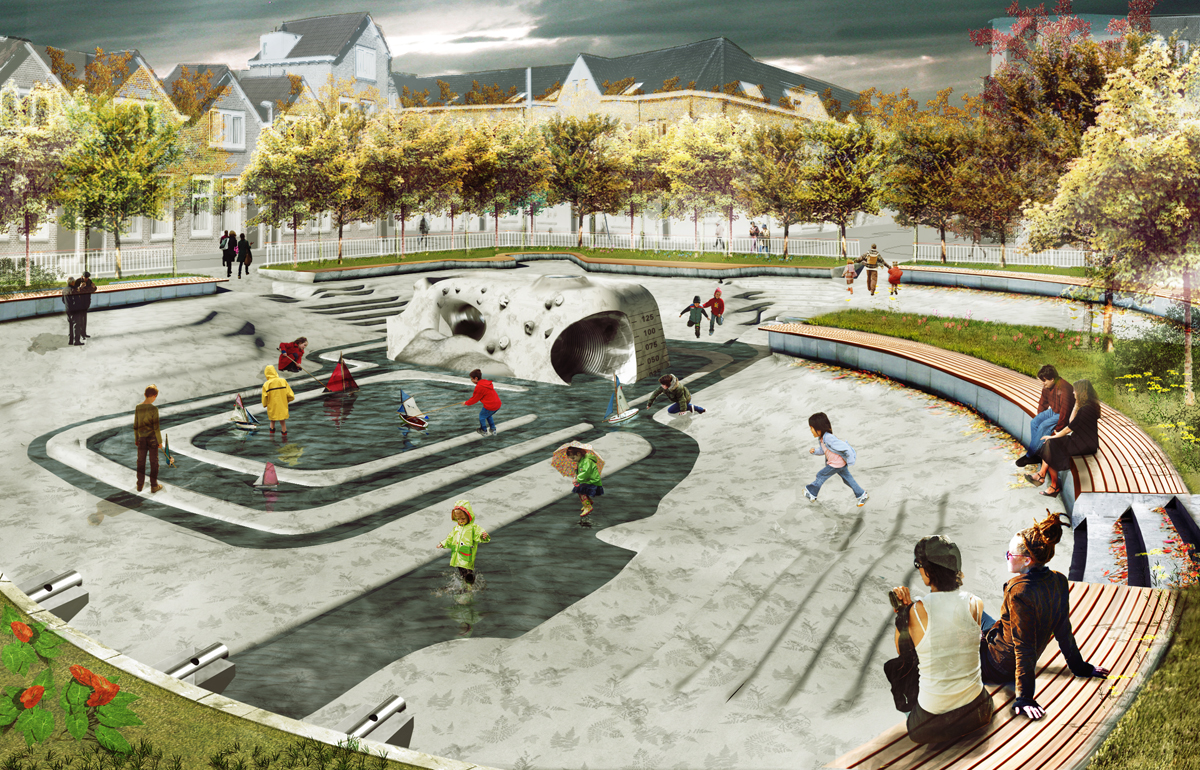Tracy Metz will speak on her new book, Sweet & Salt: Water and the Dutch, this Monday, October 1, as our Next Generation of Parks™ lecturer. This week, Tracy gives us a glimpse into her perspective on waterfront placemaking in the 21st century. Our own Kary Delaria provided the questions.
Hear more from Tracy and see many more inspiring
images from the Netherlands this
Monday, October 1, 6 PM
Rapson Hall, U of M
All the Details
Kary Delaria: As you’ve seen waterfront transformation occur, what transformation have you also seen with local economy, business and cultural that would correlate?
Tracy Metz: It is hard to underestimate the positive impact of waterfront transformation. It creates new places for people to gather, to experience events like festivals together, to get outside, relax, exercise. And where people gather, they also spend money. Reconnecting a city with its water also (re)creates a sense of place which is quite different from that of an urban setting – not necessarily better, but complementary.
In my book I give the examples of a number of cities in the Netherlands which have restored historic waterways and inner-city harbors which were filled-in in the 1960s and ’70s when the car seemed like the only thing that was important. These projects have been influential in bringing people, and therefore business (including the hospitality industry) back into the city – in spite of the fact there are always people – local inhabitants and merchants – who get disgruntled when parking places are removed.
Kary: What do you see as some of the biggest opportunities for water/riverfront development? (Conversely, what are challenges?)
Tracy: Many of the waterfront developments I discuss in Sweet & Salt are reactions to necessity: sea level rise and the increasing amounts of water flowing down through the river to the sea. The idea of the new approach to water is that by combining safety with good spatial design, the quality of our surroundings can be improved. If you play it right you can even use flood safety arguments to leverage landscape design.
Strangely enough, the Dutch water experts are less worried about the sea than the rivers. The latter have been straightened and canalized to such an extent that they have lost all their flexibility. So when there is an excess of water, these troughs simply overflow – quickly! The Dutch government is investing 2 billion euro’s in a program called “Room for the River,” buying people out in agricultural areas or moving them to higher ground to create spillways for the rivers – especially since the predictions are that this will happen more frequently as the climate changes.
Sea level rise is definitely an issue, but makes itself felt more gradually; what the coastal areas feel the most right now is the salinity, the “salt tongue” that is pushing further and further inland as the sea rises and the land subsides. Some of the Dutch drinking water companies have already had to move their intake points upstream.
Challenges: not that long ago the rivers were regarded as sewers and trashcans. As a result many of them are contaminated and inaccessible. The cleanup requires serious investment, and making the water accessible requires investment in (the design of) public space. But it is often hard to generate the sense of urgency that is required in order to get funding: most of the spaces have been non-places for as long as most people now alive can remember. That means that they don’t have a feeling of loss about these places. And a sense of loss is often a better catalyst for action than a vague promise of something pleasant in an indefinite future.
Kary: What role do/should parks and public spaces play in considering water/riverfront development?
Tracy: Huge. But I would like to point out something that all city governments know, namely that parks need maintenance, and maintenance is expensive. Depending on the nature of the site, I think it is wise to consider a hybrid form of park, more a robust natural area than the manicured 19th-century version of the park. I think it is good to let these parks-new-style reflect their natural circumstances, for example changing water levels. These “parks” can also be designed to serve as overflow areas, where water can be stored temporarily and then flow back gradually into the watertable or the river or the sewer. Rotterdam has some interesting examples of integration of storm water management and public space, such as the “water squares” (see image).
In Minneapolis, we are embarking on a series of visionary parks projects for the Mississippi Riverfront. What insight or advice would you have for leadership and citizens?
Make the water visible, make it possible to actually connect with it physically. What surprised me most about New Orleans is that the mighty Mississippi is invisible! It’s either covered over or hidden away behind walls. But ignoring it does not make it go away, as the Big Easians have discovered to their peril. If we really live with water, see it come and go, rise and fall, we will understand it better and work with it rather than just trying to shut it out. This is the approach that the Dutch call “building with nature” – although given the completely man-made character of the landscape of the Netherlands, “engineering with nature” is probably a better term.

